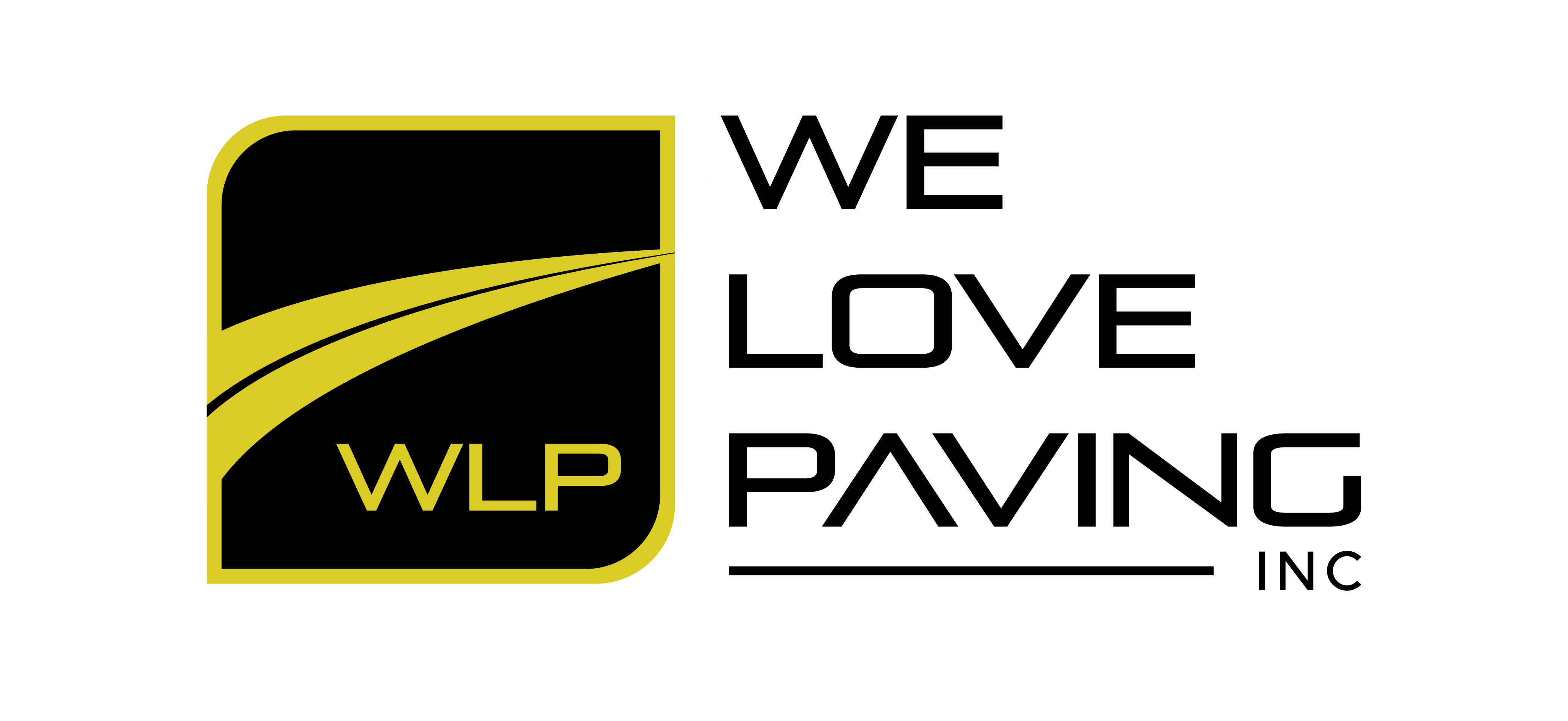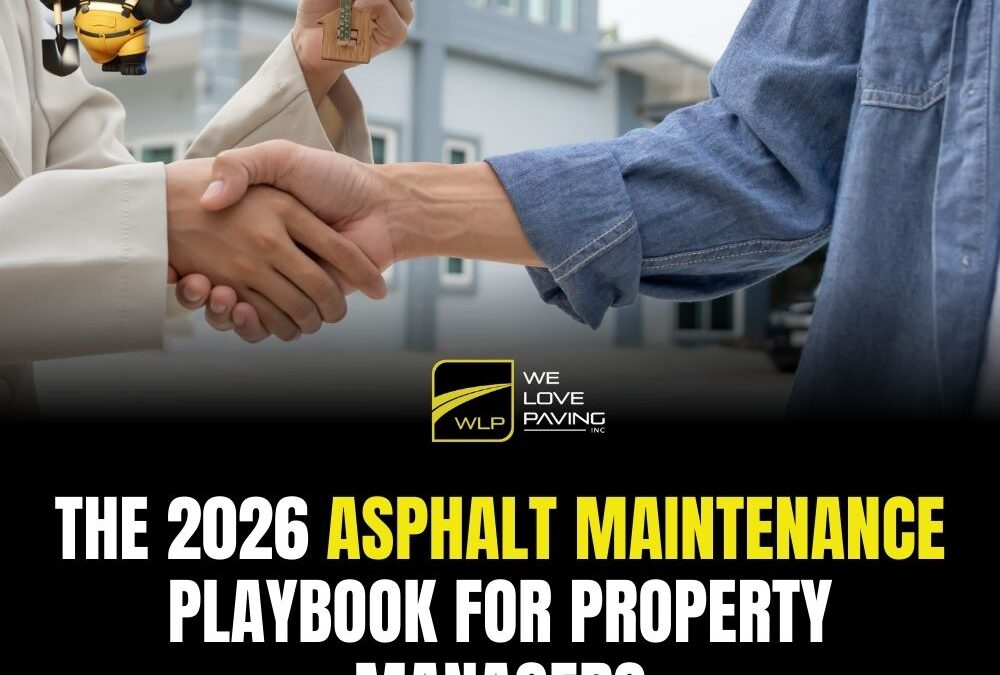Asphalt isn’t just “part of the property.”
It’s an asset — one that quietly loses value each year you ignore it.
In 2026, with rising material costs, stricter ADA enforcement, and heavier parking lot usage, property managers can’t afford to treat asphalt maintenance reactively. The smartest operators use a proactive, system-based playbook to protect their investment and avoid expensive surprises.
This guide breaks down exactly how to manage your asphalt the way top-tier PMs do.
1. Know Your Pavement’s Life Cycle (2026 Reality Check)
Asphalt isn’t permanent — but its lifespan depends almost entirely on maintenance.
Here’s the 2026 lifecycle you should expect:
-
0–3 years: Perfect condition, no cracks
-
3–5 years: Light oxidation begins
-
5–7 years: First cracks appear (critical window for crackfilling)
-
7–10 years: Structural wear increases, sealcoat needed
-
10+ years: Accelerated deterioration → patching, resurfacing, or replacement
2026 inflation note:
A crack today might cost $1–$3 to seal.
Ignore it, and it becomes a $40–$80 patch — then a $15,000+ resurfacing zone.
2. The 2026 Budget Equation: Spend a Little Now or a Lot Later
Smart property managers follow this rule:
1–3% of the replacement cost per year keeps your pavement healthy for 25+ years.
Replace a full lot in California?
That’s $120k–$450k depending on size.
Meaning:
Budgeting $2k–$8k annually is the difference between longevity and disaster.
In 2026, with rising crude oil prices and labor costs, this equation matters more than ever.
3. The Three-Tier Maintenance Strategy (2026 Update)
Every PM needs a plan that includes all three tiers below:
Tier 1 — Preventive Maintenance (Your Highest ROI)
-
Crackfilling
-
Sealcoating (every 3–5 years)
-
Minor patching
-
Drainage corrections
Why it matters in 2026:
Preventive work is still the cheapest way to extend pavement life. Costs in California are predicted to rise another 8–12%, so early action saves thousands.
Tier 2 — Corrective Maintenance
When the damage is visible:
-
Alligator cracking
-
Rutting or sinking
-
Potholes
-
Base failures
This requires:
-
Infrared patching
-
Remove & replace
-
Milling & overlay
Cost note 2026:
Corrective repairs are 3–5x more expensive than preventive fixes.
Tier 3 — Capital Improvements
For lots past their lifespan:
-
Full-depth replacement
-
Full resurfacing
-
Lot regrade for drainage
-
New striping layout
Plan this on a 12–15 year horizon.
4. 2026 Inspection Checklist (What PMs Must Record)
A tech-forward contractor will walk your property with a checklist like this:
Structural
-
Alligator cracks
-
Longitudinal / transverse cracks
-
Potholes
-
Base sinking
-
Rutting
Surface
-
Oxidation
-
Raveling
-
Faded striping
-
Sealcoat condition
Drainage
-
Standing water
-
Clogged drains
-
Flow direction issues
ADA Compliance
-
Ramp slope accuracy
-
Parking stall dimensions
-
Cross-slopes
-
Signage
-
Detectable warning placement
If your contractor doesn’t document ADA issues → huge red flag.
5. The 2026 Contractor Evaluation Checklist
Not all contractors are created equal.
Here’s how PMs avoid liabilities:
Ask for:
✔️ Mix type they’ll use (should NOT be generic)
✔️ Their surface prep process
✔️ Photos of similar projects
✔️ Warranty info
✔️ ADA experience
✔️ Traffic control plan
Avoid contractors who:
❌ Don’t specify mix type
❌ Don’t clean or prep the surface
❌ Offer suspiciously low prices
❌ Don’t bring a real crew
❌ Avoid talking about ADA
Cheap work in 2026 is even riskier — costs are up, and contractors cutting corners are everywhere.
6. Planning Maintenance Without Disrupting Tenants
The best PMs follow this workflow:
1. Pre-notice tenants 48–72 hours before
2. Use multi-phase closures (keep 50–70% of the lot open)
3. Require clear signage from contractor
4. Work weekend or overnight (depends on lot size)
5. Get a post-job report with photos
Nothing builds credibility with tenants like a smooth project.
7. Sample 2026 Annual Maintenance Plan
Here’s an example for a medium-sized commercial property:
Q1: Inspection + crackfilling
Q2: Sealcoating + striping
Q3: Infrared repair in high-traffic zones
Q4: Drainage correction + ADA touch-ups
Repeat every year and your lot easily hits 20+ years of life.
8. The Bottom Line (2026)
Property managers who follow a structured, proactive maintenance plan:
-
Spend less over 10 years
-
Avoid ADA lawsuits
-
Keep tenants safe
-
Extend pavement life
-
Get predictable budgets
-
Present better reports to owners
And most importantly…
They never get blindsided by a $40k–$250k replacement bill.
Your content goes here. Edit or remove this text inline or in the module Content settings. You can also style every aspect of this content in the module Design settings and even apply custom CSS to this text in the module Advanced settings.

